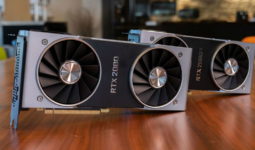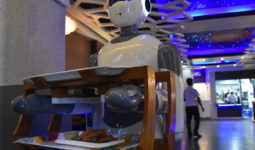MacBook Air (2018) vs. Dell XPS 13

Dell made big-screened laptops in compact packages fashionable with the XPS 13, and now Apple is joining the trend with its redesigned MacBook Air this year. Apple slimmed down the 2018 MacBook Air’s bezels, giving it a more compact footprint to compete against the XPS, while also improving on the notebook’s performance with upgraded 8th-gen Intel processors.
Both laptops feature similar wedge-shaped designs and compact footprints that promise to take up less room in your travel bag. Should you go with the Windows 10-powered XPS 13 or buy one of Apple’s most beloved Macs? We’ll weigh the features of both the XPS 13 and the MacOS Mojave-equipped Air to help you weigh your decision.
Design
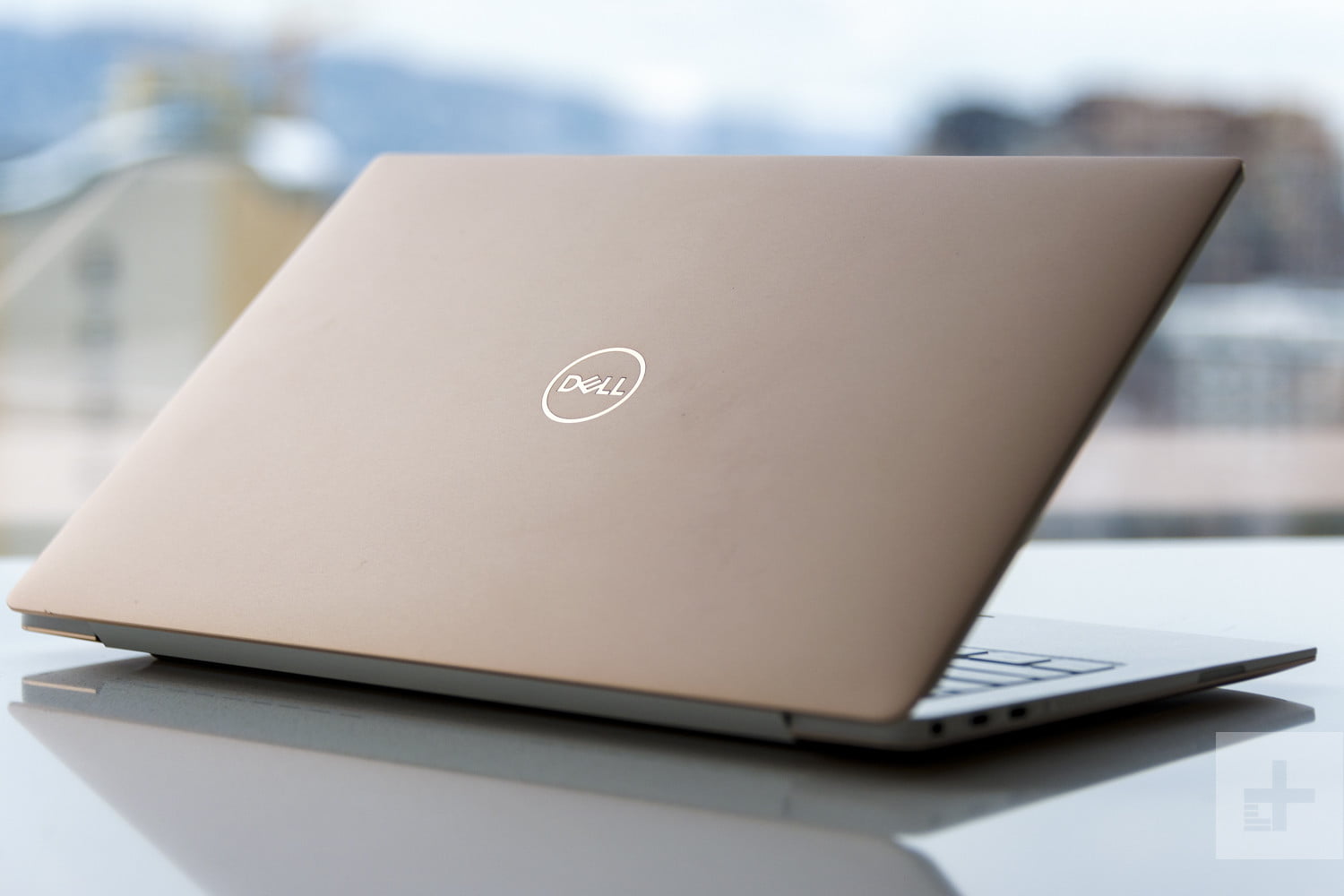
Both laptops boast 13.3-inch displays and similarly compact designs this year. Apple continues to use a unibody aluminum construction on the Air this year, while the XPS 13 differentiates with an aluminum lid and carbon fiber palm rest. The Air’s 11.97 x 8.36 x 0.61-inch dimensions is within range of the XPS 13’s 11.98 x 7.88 x 0.6-inch measurements, but at 2.7 pounds, the XPS is slightly lighter than the 2.75-pound Air. The XPS 13 comes in silver or rose gold finishes, while the Air is available in gold, silver, or space gray.
Despite sharing the same screen size, there are notable differences between Apple’s and Dell’s edge-to-edge glass displays. The MacBook Air ships with a non-touch Retina display with 2,560 x 1,600 pixels, while the XPS 13 starts with a 1080p display that can be configured with touchscreen or upgraded to a QHD+ 3,200 x 1,600 resolution. Additionally, the XPS 13’s 16:9 aspect ratio makes it more suited for videos, though professionals may prefer the slightly taller 16:10 aspect ratio on the Air. Compared to the 4K edition of the XPS 13, we found that XPS has better contrast than the Air, but Apple does a better job with the Air’s color gamut and accuracy in our review. The Air’s screen is also notably dimmer than the brightness on other Apple notebooks.
If you’re looking at a laptop for productivity, the XPS 13’s keyboard gives it a big benefit. With the 2018 MacBook Air, Apple also redesigned the keyboard with its third-generation design with butterfly key switches. The result is you’ll find more shallow key travel on the Air compared to the XPS 13 and most other keyboards on the market.
To maintain its minimalist silhouette, Apple limited connectivity on the Air to just two Thunderbolt 3 over USB-C ports for power, data transfer, connecting peripherals, and handling display output, along with a single headphone jack. The XPS 13 offers a similar selection, though only one of its USB-C ports features Thunderbolt 3. Meanwhile, the XPS 13 also throws an SD cart slot for good measure.
Performance
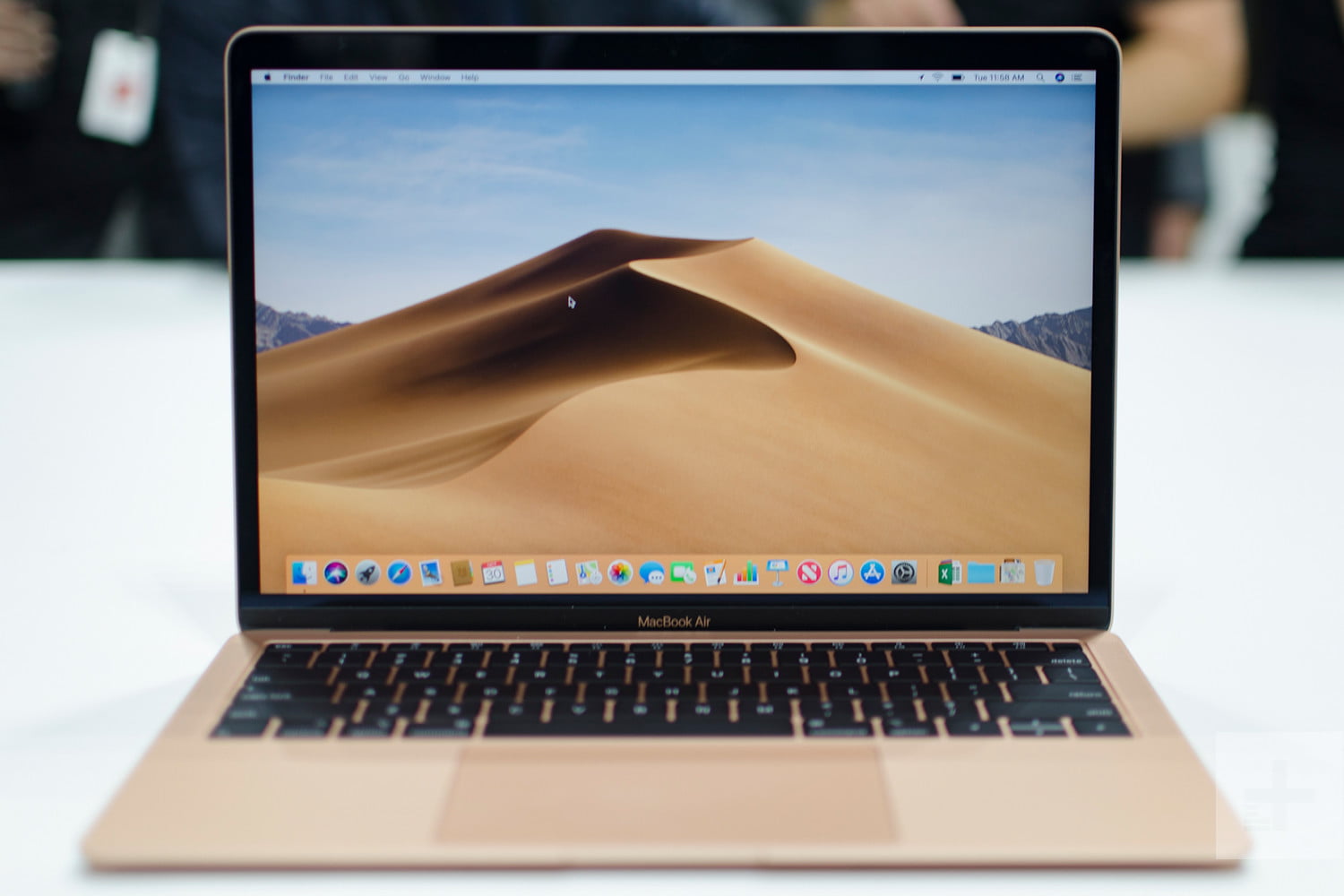
Although both laptops ship with Intel’s 8th-gen processors and share the same 1.6GHz base clock speed, the chips are quite different. The XPS 13 starts with a quad-core Kaby Lake-R CPU, while the Air uses a dual-core Intel processor. Single-core performance is roughly the same between both notebooks. But XPS 13 delivers twice the performance of the Air in our benchmark tests. The XPS 13 also took half as long to encode a 4K video sample.
Apple’s MacBook Air can be configured with either 8GB or 16GB of memory, and storage ranges from a 128GB solid-state drive up to 1.5TB. Dell offers similar RAM configurations, but SSD capacities top out at just 512GB. Neither laptop comes with discrete graphics, as both the XPS and MacBook Air relies on Intel’s integrated GPU, but users can add an eGPU if they want more graphics performance. The XPS 13 comes with Intel’s UHD Graphics 620, while the Air comes with Intel’s slightly weaker UHD Graphics 617.
Both laptops can be used for 720p HD video calls, though FaceTime remains an exclusive experience to Apple hardware. To give the XPS 13 its bezel-free design, Dell moved the webcam to the bottom of the display, which can make for some awkward video angles. On the other hand, even though the top placement of the webcam makes the MacBook Air less svelte, you’ll at least look more flattering on video.
To handle audio, the XPS 13 and Air both feature stereo speakers. The speakers are located on the sides of the XPS 13, whereas Apple uses an upward-firing design with speakers placed on either side of the keyboard.
Portability
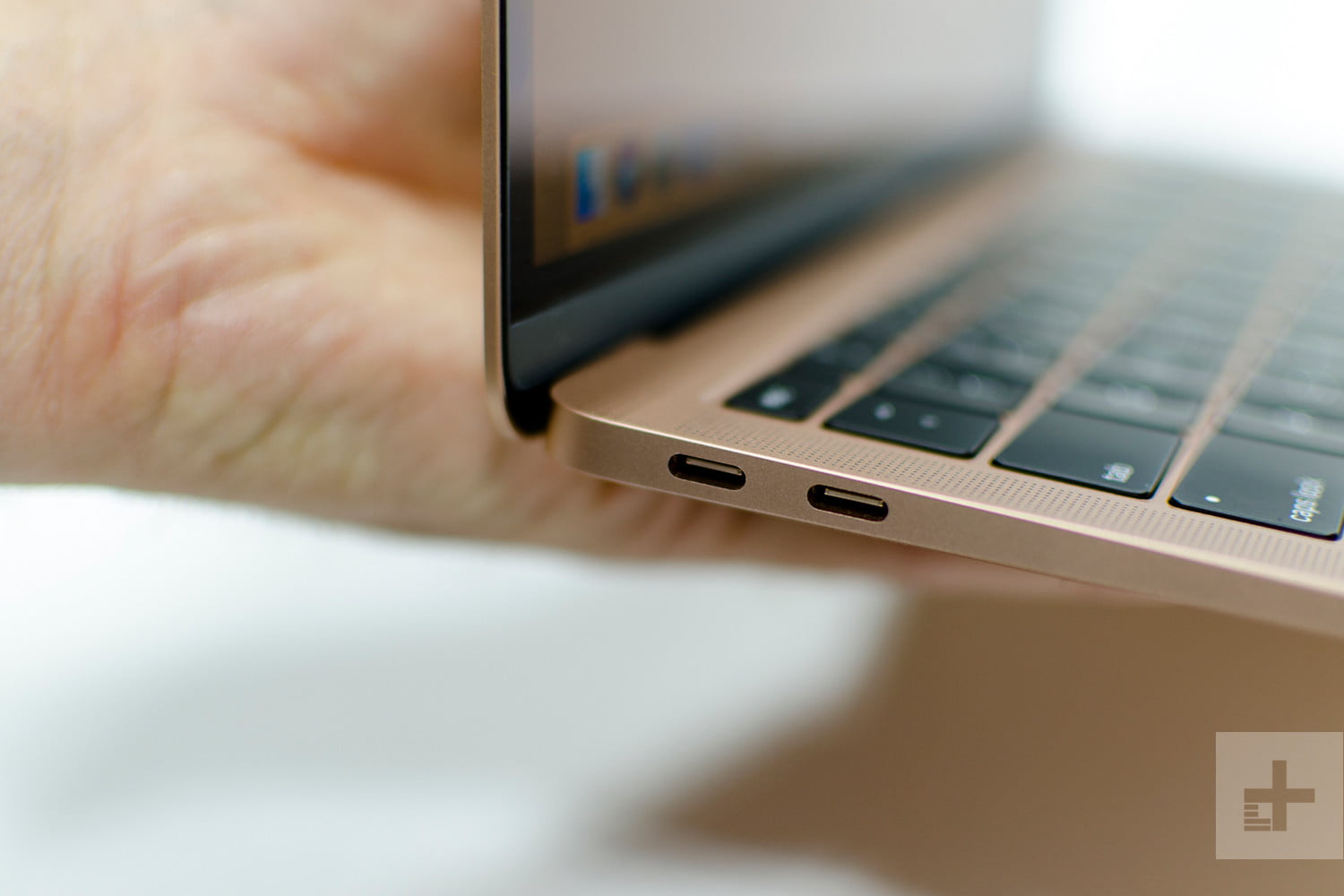
Apple’s MacBook Air has long set the standard when it comes to all-day performance. Apple claimed that the Air can last for 12 hours of wireless web browsing or up to 13 hours of iTunes movie playback, but we found that Air lasted for around eight hours in our web browsing test. Dell claims up to 13 hours when streaming Netflix videos or wireless web browsing, and up to 22 hours of productivity tasks on the FHD model of the XPS 13.
Though neither laptops come with a native HDMI or DisplayPort connector, road warriors will likely appreciate the XPS 13’s more plentiful array of ports. If you need to connect to a projector, be ready to live the dongle life regardless of which model you choose.
To protect your data, both laptops rely on biometric security. Fingerprint-based Touch ID is standard on all MacBook Air configurations, while a Windows Hello fingerprint scanner is an optional feature on select XPS 13 configurations. Both laptops support enhanced workflow when paired with a smartphone. iPhone users will benefit from better hand-off and integration with MacOS on the Air, while the XPS 13’s downloadable Dell Mobile Connect app will give similar benefits to Windows 10 users who also carry an iOS or Android smartphone.
The XPS 13 is the better entry-level option
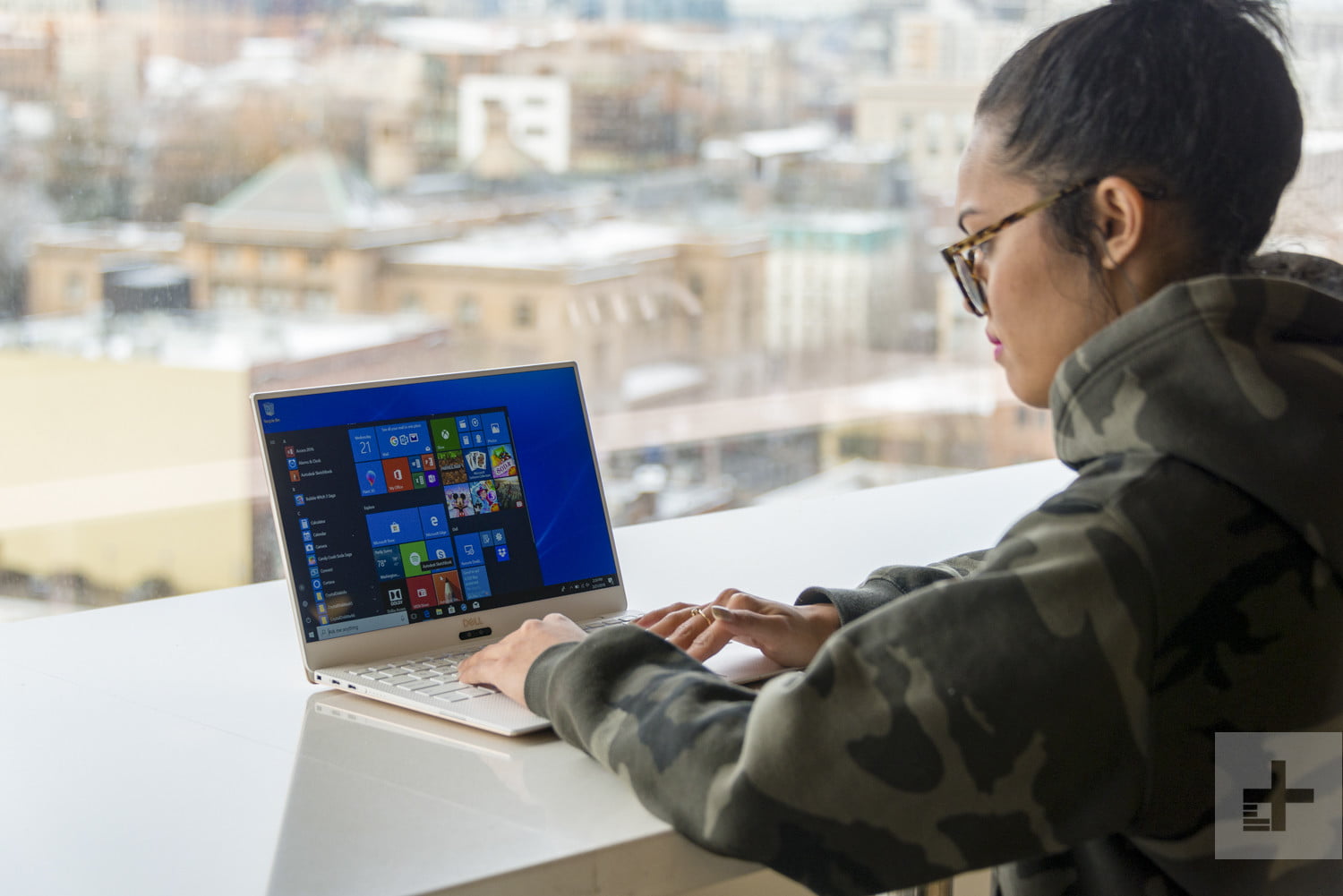
Ultimately, the decision to go with an XPS 13 or a MacBook Air boils down to your investment in either the Windows 10 or MacOS ecosystem. If you’re an existing MacOS or iPhone user, upgrading to the MacBook Air may be a natural decision — you won’t need to re-purchase your Mac apps and Apple’s Continuity feature allows a seamless workflow between the Air and your iOS smartphone.
But if you’re looking for value, the XPS 13 delivers more performance. There’s no apples-to-apples comparisons in terms of configurations, but the $1,100 XPS 13 with the quad-core Core i5 model and 8GB of RAM is pretty close. That’s smaller and cheaper than the MacBook Air — and considerably more powerful.



